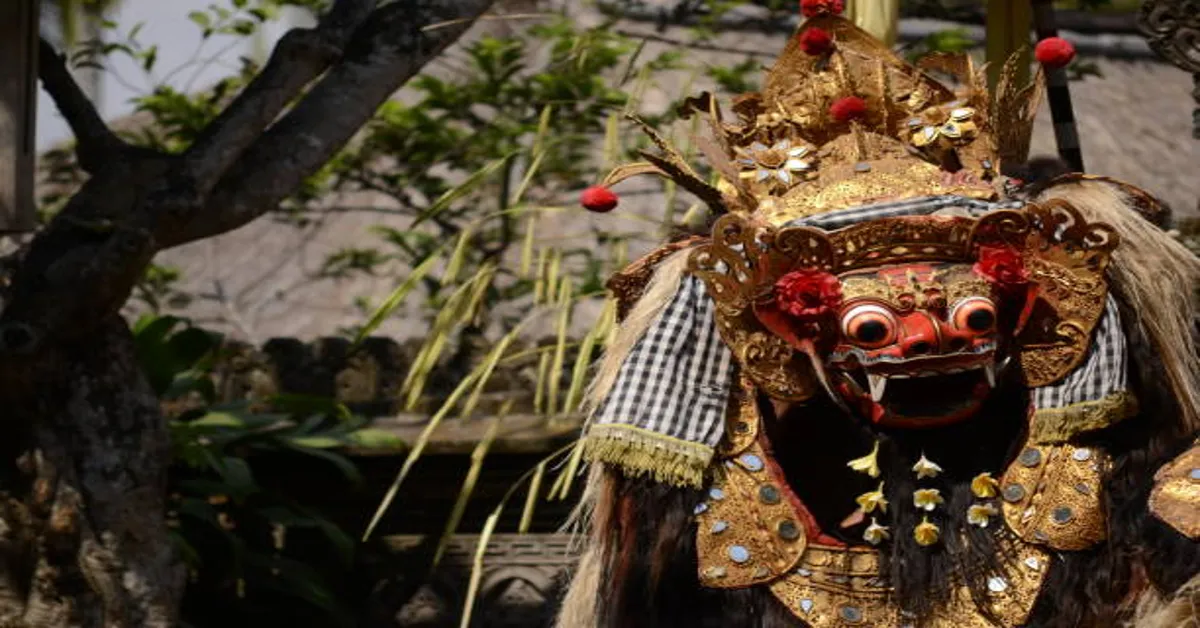Indonesia, with its rich cultural heritage and diversity, is home to numerous traditions that reflect centuries of history, spirituality, and artistry. Among the unique treasures of Balinese culture is Bondres, a form of theatrical performance deeply rooted in the island’s customs, rituals, and way of life. It is not simply a stage act; it is a blend of humor, social commentary, philosophy, and sacred ritual, designed both to entertain and to educate audiences. For the Balinese people, it serves as an important cultural medium that transmits values, reinforces community ties, and honors spiritual traditions.
In this article, we will explore it in its entirety—its origins, significance, forms, costumes, symbolic meanings, and continuing relevance in modern Bali. To present a well-rounded understanding, we will analyze not only its role in ceremonies but also its place in everyday life and its evolution as an art form. Additionally, tables and FAQs will be included to provide clarity and structured insights.
The Origins of Bondres
Bondres is a form of Balinese folk theater that merges traditional storytelling with comedic improvisation. Historically, it emerged as a way to accompany religious ceremonies, temple festivals, and community gatherings. Its performers, often regarded as Bondresan, act out characters that symbolize various archetypes of society. These archetypes range from village elders and spiritual guides to peasants, merchants, and fools.
The word “Bondres” itself refers to the character masks used during the performances. Each mask embodies a specific personality, often exaggerated for humor or symbolic impact. Through this form, performers communicate with audiences in a way that is accessible and relatable, turning complex spiritual or moral lessons into simple stories interlaced with laughter.
The Role of Bondres in Balinese Culture
Bondres is more than just entertainment; it is interwoven with Balinese cultural identity and spirituality. In Balinese Hinduism, art is inseparable from ritual. Every performance has meaning that extends beyond its surface:
- Religious Function:
It often takes place in temples as part of ceremonies. It is believed to invite divine presence, entertain the gods and spirits, and ensure the smooth running of rituals. - Social Commentary:
Performers use satire to comment on political, economic, and social issues. By embodying archetypes, they can critique leaders, highlight injustice, or poke fun at human follies without offending directly. - Education and Morality:
Stories and dialogues often include moral lessons. The characters remind people of virtues such as honesty, respect, humility, and compassion. - Community Bonding:
Since it performances bring together villagers of all ages, they strengthen unity and reinforce cultural identity.
Elements of a Bondres Performance
1. Characters and Masks
It relies heavily on characters represented by masks, known as tapel bondres. Each mask signifies a distinct personality and role in society. The exaggerated features—bulging eyes, crooked teeth, or oversized noses—create humor while also symbolizing human flaws.
| Character Type | Mask Features | Symbolic Meaning |
|---|---|---|
| Village Elder | Wrinkled face, white hair | Wisdom, tradition, respect for ancestors |
| Fool/Clown | Big nose, silly grin | Human ignorance, foolishness |
| Noble/Leader | Sharp features, neat style | Authority, responsibility |
| Farmer/Commoner | Sunburned face, rough look | Hard work, humility |
| Spiritual Figure | Calm expression, simple design | Guidance, balance |
2. Costumes
The costumes complement the masks, often including sarongs, sashes, and accessories that reflect the status of the character. For example, a noble wears more elaborate textiles, while a farmer’s costume is plain and functional.
3. Improvised Dialogue
Unlike rigidly scripted theater, it thrives on improvisation. Performers interact with the audience, respond to current events, and adjust humor based on reactions. This makes each performance unique and alive.
4. Music and Gamelan
Bondres performances are accompanied by traditional gamelan music, a Balinese ensemble of percussion instruments. The rhythm of the gamelan sets the tone—energetic during comedic acts, solemn during reflective moments, and celebratory during climaxes.
Symbolism of Bondres Masks
Masks are the most iconic aspect of it. They are not merely props but symbolic vessels of energy. In Balinese belief, when an actor dons a mask, they channel the spirit of the character. This sacred transformation demands respect and ritual preparation.
- Exaggerated Features: Symbolize human imperfection.
- Colors: White for purity, red for passion or anger, black for mystery or ignorance.
- Expressions: Smile for joy, grimace for foolishness, neutrality for wisdom.
Each mask tells a story without words, and when combined with the actor’s movements and speech, it becomes a powerful medium of expression.
Bondres as Social Satire
Bondres has long been a tool for social critique. The fool or clown character often mocks leaders, exposes corruption, or exaggerates everyday problems. Because these messages are delivered through humor, they are received positively, even when addressing sensitive topics. This function of satire keeps leaders accountable and helps maintain social harmony.
For instance, if a village head fails to fulfill promises, a it character might mimic him in a comical way, indirectly reminding him of his duties. In this sense, it is both entertainment and subtle governance.
Educational Values in Bondres
Balinese communities regard Bondres as an educational tool. The moral lessons embedded in performances include:
- Respecting elders and traditions.
- Understanding the balance between material and spiritual life.
- Avoiding arrogance and selfishness.
- Practicing honesty and fairness.
- Appreciating hard work and humility.
Children, who may not grasp philosophical teachings, learn these values through laughter and stories. Thus, iti serves as a living classroom.
Ceremonial Importance of Bondres
It is often included in odalan (temple anniversaries), weddings, and harvest festivals. Its role in ceremonies goes beyond entertainment:
- Ritual Purification: Performances are thought to cleanse the spiritual atmosphere of negative energy.
- Offerings to the Gods: The act of performing itself is seen as an offering of devotion.
- Community Harmony: By addressing conflicts in a humorous way, it reduces tension and fosters reconciliation.
Modern Adaptations of Bondres
While it remains deeply traditional, it has also adapted to modern times. Today, it is performed not only in temples but also on stages for tourists, cultural festivals, and educational programs. Some adaptations include:
- Contemporary Themes: Addressing environmental issues, modernization, or global influences.
- Tourism-Oriented Shows: Simplifying performances for visitors while still showcasing core elements.
- Media Integration: Bondres characters appearing in films, television, and online platforms.
These adaptations ensure the survival of it while maintaining its sacred essence.
Challenges in Preserving Bondres
Like many traditional art forms, it faces challenges:
- Globalization: Younger generations may be more attracted to modern entertainment.
- Commercialization: Adapting for tourists risks diluting cultural depth.
- Training and Transmission: Skilled performers are fewer, and apprenticeships require dedication.
- Balance of Sacred and Secular: Maintaining ritual significance while adapting to contemporary contexts is difficult.
Efforts to Safeguard Bondres
Communities, cultural institutions, and the government are actively working to preserve Bondres:
- Workshops for Youth: Training programs that teach mask-making, performance, and philosophy.
- Documentation: Recording performances to archive traditions.
- School Integration: Introducing Bondres in educational curricula.
- Festivals and Competitions: Encouraging innovation while keeping the essence alive.
Bondres and Balinese Identity
Bondres is a reflection of Balinese identity. It embodies the philosophy of Tri Hita Karana, the harmony between humans, nature, and the divine. By presenting everyday life through humor, it connects the spiritual with the mundane. For the Balinese, it is not just theater—it is life itself, expressed with laughter and wisdom.
Comparative Insight: Bondres and Global Folk Theater
Bondres shares similarities with folk theater traditions worldwide. For example:
- Japanese Kyogen: A comedic theater performed alongside Noh, similar in its satire and masks.
- European Commedia dell’Arte: Italian masked theater with stock characters.
- African Masked Rituals: Use of masks to embody spirits and educate communities.
This shows that it is part of a universal human tendency to blend humor, spirituality, and teaching.
Conclusion
Bondres is a jewel of Balinese culture, a performance that unites ritual, humor, and social consciousness. Through its masks, characters, and improvisational dialogues, it continues to educate, entertain, and inspire. As both sacred and secular art, it reflects the soul of Bali—joyful, wise, and deeply connected to tradition.
Its preservation is vital, not only for Bali but for global cultural heritage. By supporting it, we honor human creativity and the timeless power of art to shape societies.
ALSO READ: Diceva: Meaning, Origin, Usage, and Cultural Importance
FAQs
Q1: What is Bondres in Balinese culture?
Bondres is a traditional Balinese masked theater that combines comedy, ritual, and moral lessons, often performed during ceremonies.
Q2: Why do Bondres performers wear masks?
Masks symbolize different characters and human traits. They are sacred vessels through which actors channel symbolic energies.
Q3: Is Bondres only for entertainment?
No, Bondres also educates, satirizes social issues, supports rituals, and fosters community unity alongside its entertainment role.
Q4: How is Bondres different from other Balinese performances?
Unlike highly structured performances such as Legong or Barong, Bondres relies on improvisation, satire, and direct audience interaction.
Q5: Can tourists watch Bondres performances?
Yes, many Bondres shows are adapted for tourism, though traditional versions tied to rituals remain exclusive to community ceremonies.









